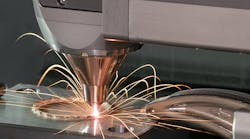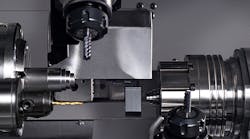Domestic manufacturers consumed $168.69 million worth of cutting tools during November 2016, slightly less (-0.2%) than during October but 9.3% higher than the November 2015 figure. The results may suggest a more positive direction in U.S. manufacturing activity, inasmuch as cutting tools are a primary consumable for machine shops and other manufacturing operations, and the consumption of those products serves as an index to their production volumes, comparable to manufacturers’ durable goods shipments.
With the November results, the consumption of cutting tools has declined for five straight months. Through November, 2016 U.S. cutting tool consumption totaled $1.867 billion, down 5.7% compared with the January-November 2015 total.
The monthly Cutting Tool Market Report is maintained by AMT - the Assn. for Manufacturing Technology and the U.S. Cutting Tool Institute — to track current activity by machine shops and comparable manufacturing businesses. CTMR results represent actual dollar figures reported by participating companies, who represent the majority of the U.S. market for cutting tools.
The CTMR is distinct from the monthly U.S. Manufacturing Technology Orders report, which is maintained by AMT to track capital investment in the sector, making that program a leading indicator of future manufacturing activity trends.
“Since the November elections, the cutting tool industry has been following the economic indicators and the growing optimism for an improving manufacturing market,” according to Brad Lawton, chairman of AMT’s Cutting Tool Product Group. “The current monthly shipment numbers are not showing this increase, but we are anticipating improvements certainly by the end of the first quarter.”
In their joint release of the November CTMR results, AMT and USCTI cited Scott Hazelton, managing director of Economics & Country Risk at IHS Markit, who predicted that U.S. cutting tool industry sales “should return to growth mode in the first half of 2017.” This improvement would be guided by higher oil prices stimulating energy-sector activity, adding to improving manufacturing “fundamentals.”
“Oil price increases are expected to slow and growth in the important transportation equipment sector will also taper off,” according to Hazelton. “As such, 2017 growth will be temperate with stronger performance in 2018 as U.S. business investment picks up.”











